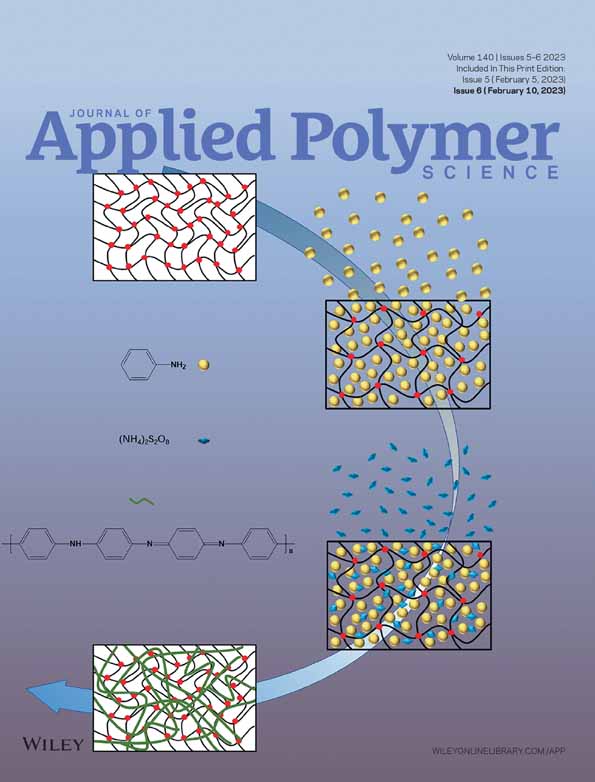Rheological and mechanical behavior of non-spherical poly(lactic acid) particles embedded poly(butylene adipate-co-terephthalate) blend
Funding information: National Research Foundation of Korea (NRF); Korea government (MSIP), Grant/Award Number: 2020M3H7A1098305
Abstract
In this study, the poly(lactic acid) (PLA)/poly(butylene adipate-co-terephthalate)(PBAT) blend is investigated to improve rheological and mechanical performances of PBAT based on rheological, mechanical, and thermal behavior analyses. The multi-step mixing method is developed to fabricate the blend with non-spherical morphology. In the multi-step mixing method, blends with a wide composition range (25/75–75/25) are mixed with additional PBAT at a mixing temperature between the melting temperatures of PBAT and PLA to produce the PBAT blend embedded with non-spherical PLA particles (10 wt%). The embedding of non-spherical PLA particles in PBAT increases the resistance against deformation, resulting in strain hardening behavior and an increase in the yield strength as well as the tear resistance of the PBAT. The presence of stiff PLA particles enhances the crystallization behavior of PBAT, meaning that polymer chains may interpenetrate. The findings of this study suggest that the multi-step mixing method is beneficial for embedding non-spherical PLA particles into a PBAT matrix, which in turn facilitates the maintenance of good interfacial adhesion to increase the melt strength, yield strength, and tear resistance.
CONFLICT OF INTEREST
The authors declare no conflicts of interest.
Open Research
DATA AVAILABILITY STATEMENT
The research data are not shared.




